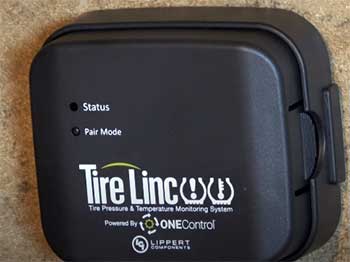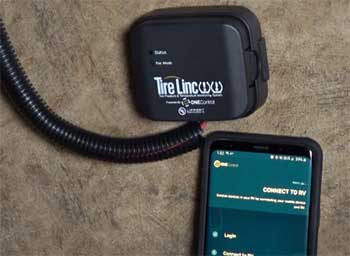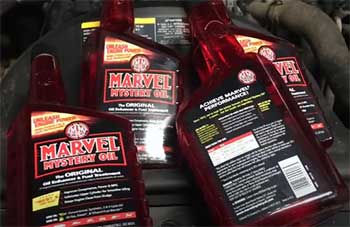With the advent of technology, vehicles have seen a revolution in terms of user-friendliness and safety features. Among these advancements, Tire Linc® has emerged as a user-favorite, equipping drivers with critical, real-time tire performance data.
However, as with any technological product, Tire Linc® too comes with its own set of challenges. In this article, we aim to unravel the common issues users face with Tire Linc® products and explore potential solutions.
Problems With Tire Linc®
- Sensor Longevity Concerns

One of the most frequently reported problems with Tire Linc® is the lifespan of the tire sensors.
Although designed to last for several years, some users report a shorter-than-expected lifespan.
Environmental factors, such as extreme temperature fluctuations, or physical damage can cause these sensors to fail prematurely.
Moreover, tire sensors can be sensitive to battery issues.
As is the case with any battery-operated device, a low or dead battery can lead to sensor failure.
Unfortunately, some users have reported difficulties in accessing and replacing the battery, leading to sensor replacement in entirety, a far more expensive solution.
- Unresponsive Tire Sensors
A major grievance users have had with Tire Linc® revolves around tire sensors not reading correctly. Sometimes, sensors fail to communicate with the Tire Linc® application, leading to a lack of real-time data about tire health.
This issue often arises due to signal interference or loss, particularly in areas with high electromagnetic activity.
A sensor misreading can also result from a software glitch. Users have reported instances where sensors present incorrect tire pressure readings. This can potentially lead to the misjudgment of tire conditions, posing serious safety risks.
Regularly updating the Tire Linc® application and keeping track of sensor maintenance can help minimize this issue.
- Inaccurate Temperature Readings
Another concern that users have reported about Tire Linc® is inaccurate temperature readings. The sensors are designed to monitor the temperature of the tires, which is crucial in maintaining optimal tire performance and avoiding potential hazards.
However, in some instances, the sensors relay false temperature data, leading to unnecessary tire checks or, worse, ignorance of a genuine overheating issue. Regular calibration can help ensure accuracy and avoid such misreadings.
- Sensor Installation Problems

Tire Linc® sensors are user-friendly and straightforward to install.
However, some users have reported encountering issues during installation.
If not installed correctly, the sensor might not provide accurate data or, in some cases, fail to function altogether.
It’s crucial to follow the provided installation guide meticulously, or consider professional help, to prevent such issues.
- Compatibility Issues
While Tire Linc® offers a wide range of compatibility with various vehicles and tire types, there have been instances where users have reported compatibility issues. Some users found that the Tire Linc® sensors did not fit their vehicle’s tires as advertised, causing a lack of readings.
Before purchasing, double-check that the product is compatible with your specific vehicle model and tire type.
Effects of a Bad Tire Sensor
When a tire sensor goes bad, the consequences can be far-reaching. The most immediate impact is the loss of access to real-time tire data.
Users are left in the dark about their tire’s health, pressure, and temperature, which can lead to a higher likelihood of accidents due to unexpected tire failures.
Additionally, a malfunctioning sensor might send false alerts, causing unnecessary panic and leading to unwarranted tire maintenance or replacements.
Close Competitors of Tire Linc®
- TireMinder®
A key competitor to Tire Linc®, TireMinder® offers similar real-time tire monitoring solutions. They provide a range of products, suitable for different vehicle types.
However, users have reported occasional issues with the product’s longevity and customer support.
- FOBO Tire
FOBO Tire is another player in the tire monitoring space, providing both direct and indirect tire monitoring systems. They offer easy-to-install sensors and an intuitive mobile app.
However, some users have found their pressure readings to be slightly off at times.
- Nonda ZUS®
Nonda ZUS® is recognized for its Smart Tire Safety Monitor. It is lauded for its easy installation and accurate readings. Nonetheless, a few users have reported issues with the sensor batteries and difficulties in finding replacements.
- TST Truck System Technologies
TST offers a robust solution for commercial and heavy-duty vehicles. They provide high-quality, durable sensors that handle the rigorous demands of these vehicles. However, their products’ complexity and cost may not appeal to everyday users.
- EEZTire
EEZTire is another competitor in this field, offering real-time tire pressure and temperature monitoring systems.
While it boasts user-friendly features and a well-designed interface, some users have reported the product’s signal strength to be less reliable, especially over long distances.
Also Read: Problems With Douglas Tires.
Frequently Asked Questions (FAQ)
Tire Linc® sensors are designed to last several years under normal conditions. However, their lifespan can be influenced by factors like temperature extremes, physical damage, and battery life.
This can be due to a variety of reasons such as signal interference, software glitches, or a low/dead battery. Regular maintenance and updates can help keep this problem at bay.
A bad tire sensor can lead to the loss of critical tire data, increased risk of accidents due to unexpected tire failures, and unwarranted maintenance from false alerts.
Persistent low-pressure warnings despite correct tire pressure or a complete lack of data from the sensor might indicate a bad tire sensor. Regular checks and diagnostics are recommended for prompt identification and rectification.
Final Thoughts
In conclusion, while Tire Linc® products offer invaluable real-time tire health data, users need to be aware of the potential problems.
Regular maintenance, updates, and diagnostics can help mitigate these issues and ensure safe, stress-free drives.

